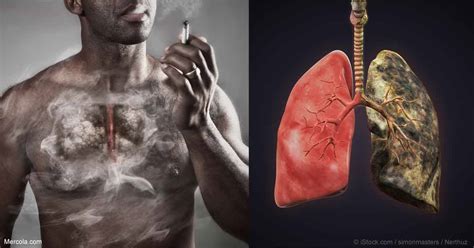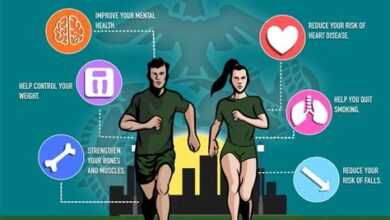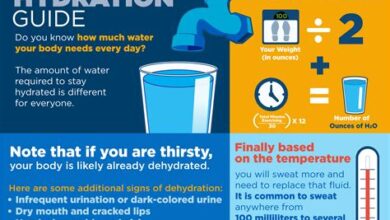The Impact of Smoking on Physical Health

Learn about the health risks of smoking, including effects on respiratory and cardiovascular systems, cancer development, and other physical implications. Expert insights on smoking’s impact.Smoking is a habit that has long been associated with a myriad of health risks, yet many individuals continue to engage in this activity. In this blog post, we will delve into the various ways in which smoking impacts physical health. From the detrimental effects on the respiratory and cardiovascular systems to the heightened risk of developing cancer, the implications of smoking on the body are far-reaching. Additionally, we will explore other lesser-known physical health implications of smoking that are often overlooked. By understanding the comprehensive impact of smoking on physical health, we hope to provide valuable insight and education to our readers, ultimately empowering them to make informed decisions about their health and well-being. Let’s take a closer look at the detrimental effects of smoking on the body and the importance of prioritizing a smoke-free lifestyle.
Overview of the health risks of smoking
Smoking is a dangerous habit that can have serious impacts on physical health. The habit of smoking exposes the body to a myriad of health risks, including but not limited to respiratory issues, cardiovascular problems, and an increased risk of developing cancer. The chemicals in cigarettes can cause irreparable damage to the body, leading to chronic health conditions and decreased quality of life.
One of the most common health risks associated with smoking is the damage it causes to the respiratory system. The inhalation of toxic chemicals from tobacco smoke can lead to the development of respiratory diseases such as chronic bronchitis, emphysema, and even lung cancer. Over time, smoking can severely reduce lung function and overall respiratory health, making it difficult for individuals to breathe properly and leading to a decreased quality of life.
In addition to its impact on the respiratory system, smoking can also have detrimental effects on the cardiovascular system. The chemicals in tobacco smoke can cause the blood vessels to constrict, leading to high blood pressure and an increased risk of heart disease and stroke. Smoking can also lead to the buildup of plaque in the arteries, further increasing the risk of cardiovascular problems. These effects can be particularly dangerous for individuals with pre-existing heart conditions, making smoking a major risk factor for heart-related issues.
Effects of smoking on the respiratory system
Smoking has a detrimental impact on the respiratory system, leading to various health issues such as chronic bronchitis, emphysema, and chronic obstructive pulmonary disease (COPD). The harmful chemicals in cigarette smoke can cause inflammation and irritation in the lining of the airways, leading to excessive mucus production and narrowing of the air passages. Over time, this can result in difficulty breathing, wheezing, and coughing.
Furthermore, smoking damages the small hair-like structures called cilia that line the airways, which are responsible for clearing mucus and debris from the lungs. When these cilia are impaired, the lungs are less able to clean themselves, making smokers more susceptible to respiratory infections and illnesses. In addition, long-term smoking can cause irreversible damage to the lung tissue, leading to decreased lung function and reduced oxygen exchange, ultimately resulting in shortness of breath and decreased physical endurance.
It’s important to note that the effects of smoking on the respiratory system are not limited to smokers themselves, as secondhand smoke can also cause harm to others. Non-smokers who are exposed to secondhand smoke are at an increased risk of developing respiratory conditions such as asthma, bronchitis, and pneumonia, particularly in children and individuals with pre-existing respiratory conditions.
Impact of smoking on the cardiovascular system
Impact of smoking on the cardiovascular system
Smoking has a significant impact on the cardiovascular system, leading to a range of health issues. The chemicals in tobacco smoke can cause damage to the blood vessels and decrease the flow of oxygen-rich blood to the heart, which can increase the risk of developing heart disease. In addition, smoking can also lead to the buildup of fatty deposits in the arteries, known as atherosclerosis, which can ultimately result in heart attacks and strokes. The risk of developing blood clots also increases for those who smoke, which can further contribute to cardiovascular complications.
Furthermore, smoking is associated with the narrowing of the arteries, a condition known as peripheral artery disease, which can reduce blood flow to the limbs and lead to pain and tissue damage. This can result in serious complications such as gangrene and amputation. Additionally, the harmful substances in cigarette smoke can also cause an increase in the heart rate and blood pressure, putting additional strain on the cardiovascular system and increasing the risk of developing hypertension and other cardiovascular conditions.
Overall, the impact of smoking on the cardiovascular system is clear and significant. It is important for individuals to understand the serious health implications of smoking and to take steps to quit in order to reduce their risk of developing potentially life-threatening cardiovascular diseases. Quitting smoking can lead to immediate improvements in cardiovascular health, including a reduction in the risk of heart attacks and strokes, and can ultimately lead to a longer and healthier life.
Smoking and its link to cancer development
The Impact of Smoking on Physical Health
Smoking is a known risk factor for the development of various types of cancer, with lung cancer being the most commonly associated with this harmful habit. The link between smoking and cancer development is well-documented, with research consistently showing that tobacco smoke contains numerous carcinogens that can directly damage cells in the body, increasing the likelihood of cancer formation.
What many people may not realize is that smoking not only increases the risk of lung cancer, but it is also linked to several other types of cancer, including but not limited to, throat, mouth, esophagus, pancreas, bladder, and cervix cancer. The harmful chemicals in cigarette smoke can affect different parts of the body, increasing the risk of cancer in various organs and tissues.
It’s important to understand that the impact of smoking on cancer development is not limited to the individual who smokes. Secondhand smoke exposure has also been linked to an increased risk of cancer in non-smokers, particularly in the case of lung cancer. This means that the harmful effects of smoking extend beyond the individual smoker, posing a risk to those around them as well.
Other physical health implications of smoking
Aside from the well-known effects of smoking on the respiratory and cardiovascular systems, there are several other physical health implications that are important to consider. Smoking can also have detrimental effects on the skin, leading to premature aging and increased risk of skin cancer. The chemicals in cigarettes can also weaken the immune system, making smokers more susceptible to infections and illnesses.
Furthermore, smoking is linked to decreased bone density, which can increase the risk of fractures and osteoporosis. It can also affect oral health, leading to tooth loss, gum disease, and other dental issues. The impact of smoking on overall physical health is extensive and can manifest in various ways beyond the more commonly discussed respiratory and cardiovascular effects.
It’s important for individuals to be aware of these additional health implications in order to make informed decisions about their smoking habits and consider the holistic impact on their overall well-being.





